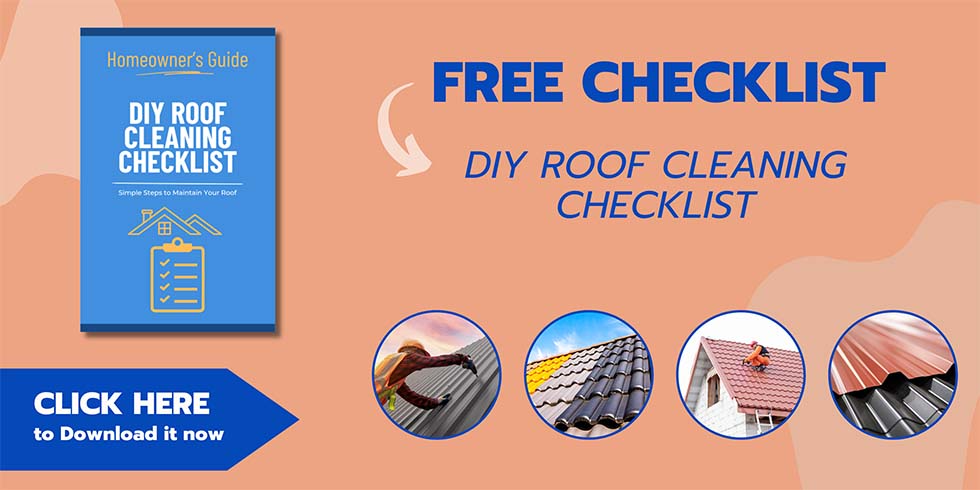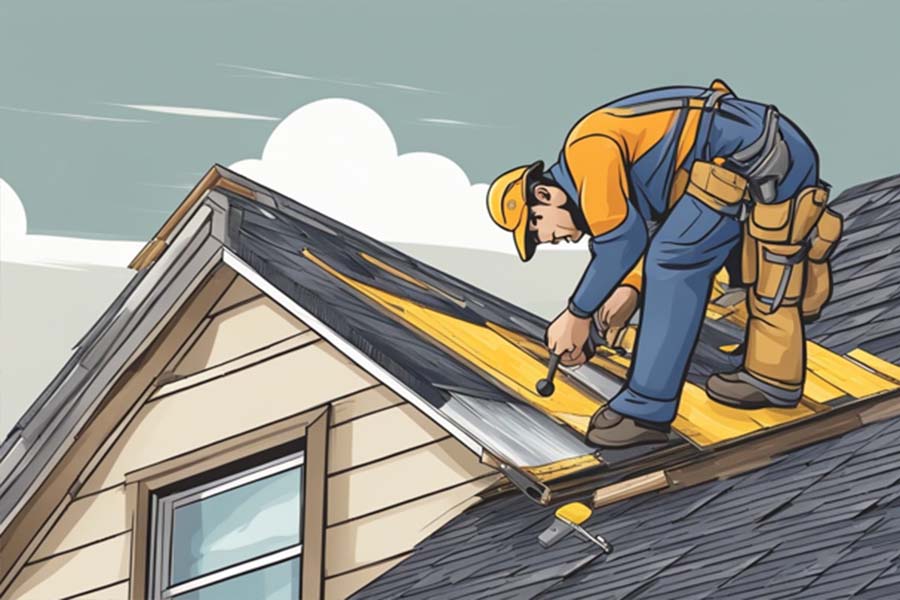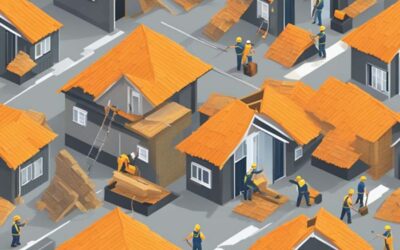Roof repairs can be a costly and time-consuming task for homeowners. However, early detection and minor fixes can save homeowners from the headache of major repairs. Regular inspection and maintenance of the roof can prevent leaks, damage, and prolong the lifespan of the roof.
Minor repairs such as replacing missing shingles, fixing cracks, and sealing leaks can be done at a lower cost than major repairs. Homeowners can save money by addressing small issues before they become bigger problems. In addition, minor repairs can prevent water damage, mold growth, and other issues that can cause health problems for the occupants of the house.
Overall, early detection and minor fixes are crucial for affordable roof repairs. Homeowners should prioritize regular inspections and maintenance to prevent major repairs and save money in the long run. In the following sections, we will discuss the benefits of early detection, common roof problems, and tips for maintaining a healthy roof.
The Importance of Regular Roof Maintenance
Regular roof maintenance is essential for ensuring the longevity of your roof and preventing costly repairs. It is recommended to have your roof inspected at least once a year, preferably in the spring or fall, to identify any potential issues before they become major problems.
One of the most important reasons for regular roof maintenance is to detect and address minor issues before they escalate into major repairs. Early detection of issues such as damaged shingles, cracks, and leaks can save you a significant amount of money in the long run. Neglecting minor issues can lead to more significant damage to your roof and even compromise the structural integrity of your home.
In addition to saving you money, regular roof maintenance can also help you save energy. A well-maintained roof can improve your home’s insulation, which can reduce your heating and cooling costs. By ensuring that your roof is in good condition, you can also prevent heat loss during the winter months and keep your home cooler in the summer.
Regular roof maintenance can also help improve the curb appeal of your home. A well-maintained roof can enhance the overall appearance of your home, making it more attractive to potential buyers if you decide to sell your home in the future.
In conclusion, regular roof maintenance is essential for ensuring the longevity of your roof, preventing costly repairs, saving energy, and improving the curb appeal of your home. By scheduling regular inspections and addressing minor issues promptly, you can help protect your investment and avoid major headaches down the road.
Identifying Common Roof Issues
Cracked or Missing Shingles
One of the most common roof issues is cracked or missing shingles. This could be due to various reasons such as harsh weather conditions, poor installation, or natural wear and tear. If left unattended, this could lead to water damage and costly repairs. Homeowners can easily identify cracked or missing shingles by visually inspecting their roof. They can also look for shingle granules in their gutters or on the ground, which is a sign of shingle deterioration.
Damaged Flashing
Flashing is the material used to seal joints and seams on a roof. It is typically made of metal, and if it becomes damaged or loose, it can cause water to seep through the roof. Homeowners can identify damaged flashing by looking for rust, cracks, or missing pieces. It is important to address damaged flashing as soon as possible to prevent further damage to the roof and the interior of the home.
Leaks and Water Damage
Leaks and water damage are common roof issues that can be caused by a variety of factors such as damaged shingles, flashing, or gutters. Homeowners can identify leaks by looking for water stains on their ceilings or walls, or by noticing a musty odor in their home. It is important to address leaks as soon as possible to prevent further damage to the roof and the interior of the home.
Blocked Gutters and Downspouts
Blocked gutters and downspouts can cause water to overflow onto the roof and seep into the home. Homeowners can identify blocked gutters and downspouts by looking for water spilling over the sides of their gutters or by noticing water damage on their exterior walls. It is important to clean gutters and downspouts regularly to prevent water damage to the roof and the interior of the home.
By identifying common roof issues early on, homeowners can save money on costly repairs and prolong the life of their roof. Regular roof inspections and maintenance can help prevent these issues from occurring in the first place.
Early Detection Techniques
Visual Inspection Tips
One of the most effective ways to detect early signs of roof damage is through visual inspection. Homeowners can conduct a visual inspection of their roof by looking for signs of wear and tear, such as cracked or missing shingles, rusted flashing, or damaged gutters. It is important to conduct this inspection regularly, especially after severe weather events. Homeowners should also keep an eye out for water stains on their ceilings or walls, which could indicate a leaky roof.
Using Technology for Roof Assessment
Advancements in technology have made it easier for homeowners to detect early signs of roof damage. Thermal imaging cameras can detect areas of heat loss, which could indicate a problem with insulation or ventilation. Drones equipped with high-resolution cameras can provide a bird’s-eye view of the roof, allowing homeowners to identify any potential issues. There are also mobile apps available that can help homeowners assess the condition of their roof.
Professional Inspection Services
While homeowners can conduct their own visual inspections, it is recommended to have a professional inspect the roof at least once a year. Professional roofers have the experience and knowledge to identify potential problems that may be missed during a visual inspection. They can also provide recommendations for repairs or maintenance to prevent further damage. Homeowners should ensure that the roofing contractor they hire is licensed and insured to protect themselves from any liability issues.
By utilizing these early detection techniques, homeowners can identify and address minor roof repairs before they become major problems. Regular inspections and maintenance can prolong the life of the roof and save homeowners money in the long run.
DIY Roof Repair Guidance
Tools and Materials Needed
Before attempting any DIY roof repair, it is important to have the necessary tools and materials. Here are some of the items that you will need:
- Safety equipment, such as gloves, goggles, and a hard hat
- Ladder
- Hammer
- Roofing nails
- Roofing cement
- Roofing tape
- Roofing sealant
- Caulk gun
- Utility knife
- Roofing shingles
- Roofing tar
It is important to ensure that all tools and materials are of good quality and appropriate for the specific repair job.
Step-by-Step Repair Processes
When it comes to repairing a roof, it is important to follow a step-by-step process to ensure that the repair is done correctly. Here are the steps for a basic roof repair:
- Identify the problem area: This could be a leak, missing shingles, or damaged flashing.
- Prepare the area: Remove any damaged or loose materials, and clean the area thoroughly.
- Apply roofing cement: Apply roofing cement to the damaged area, making sure to cover it completely.
- Apply roofing tape: Place roofing tape over the roofing cement, smoothing it out to ensure a tight seal.
- Apply roofing sealant: Apply roofing sealant over the roofing tape to provide additional protection against leaks.
- Replace damaged shingles: If the repair involves replacing damaged shingles, remove the old shingles and replace them with new ones, securing them with roofing nails.
- Apply roofing tar: Apply roofing tar to the nails and any exposed areas of the repair to provide additional protection against leaks.
Safety Precautions
Roof repair can be dangerous, so it is important to take the necessary safety precautions. Here are some tips to keep in mind:
- Use a sturdy ladder that is securely positioned.
- Wear appropriate safety equipment, such as gloves, goggles, and a hard hat.
- Work on a dry, sunny day to avoid slipping.
- Avoid working alone, and have someone on the ground to assist you.
- Follow all manufacturer instructions for tools and materials.
- If the repair job is too complex or dangerous, consider hiring a professional roofer.
By following these DIY roof repair guidance steps and safety precautions, homeowners can save money on repairs and ensure that their roofs are in good condition.
When to Call the Professionals
Assessing the Extent of Damage
While some minor roof repairs can be done by homeowners, it is important to know when to call in the professionals. One key factor in making this decision is assessing the extent of the damage. If the damage is extensive, such as a large hole or significant water damage, it is best to leave the repairs to the professionals. Attempting to fix such issues without proper knowledge and equipment can lead to further damage and safety hazards.
Cost-Benefit Analysis of DIY vs. Professional Repair
Another consideration is the cost-benefit analysis of DIY vs. professional repair. While DIY repairs may seem more cost-effective at first, they can end up costing more in the long run if done incorrectly. Professional repairs may cost more upfront, but they are often backed by warranties and guarantee quality workmanship. It is important to weigh the pros and cons of each option before making a decision.
Finding a Reputable Roofing Contractor
When it comes to hiring a professional roofing contractor, it is crucial to find a reputable one. Homeowners should do their research and check for certifications, licenses, and insurance. They should also read reviews and ask for references from previous clients. A reputable contractor will provide a written estimate and contract, and will be transparent about the repair process and timeline.
In summary, homeowners should call in the professionals for extensive roof damage, weigh the cost-benefit of DIY vs. professional repair, and find a reputable roofing contractor for necessary repairs.
Preventative Measures and Long-Term Care
Regular Cleaning and Maintenance
Regular cleaning and maintenance of the roof is essential in preventing costly repairs. Debris, such as leaves and twigs, can accumulate on the roof and in the gutters, causing water to back up and potentially damage the roof. It is recommended to clean the roof and gutters at least twice a year, preferably in the spring and fall. Regular cleaning and maintenance also help to identify any minor issues before they become major problems.
Weatherproofing Solutions
Weatherproofing solutions can help to protect the roof from damage caused by extreme weather conditions. Applying a weather-resistant coating to the roof can help to prevent water damage, while adding insulation can help to regulate the temperature inside the building. Installing a ventilation system can also help to prevent moisture buildup, which can lead to mold and mildew growth.
Scheduled Professional Inspections
Regular professional inspections can help to detect any issues with the roof before they become major problems. A professional roofer can identify any signs of wear and tear, such as cracks or missing shingles, and recommend the appropriate repairs. It is recommended to schedule a professional inspection at least once a year, preferably in the spring or fall.
By following these preventative measures and providing long-term care, homeowners can extend the life of their roof and avoid costly repairs. Regular cleaning and maintenance, weatherproofing solutions, and scheduled professional inspections are all essential in ensuring the health and longevity of the roof.





0 Comments